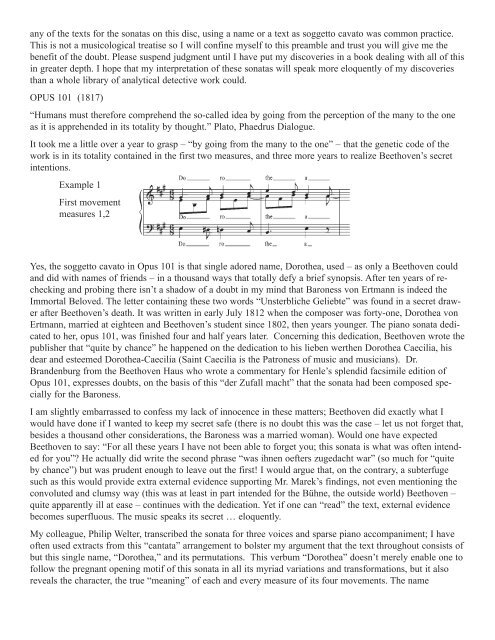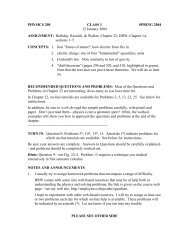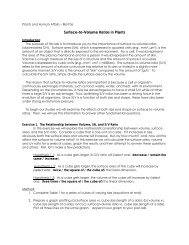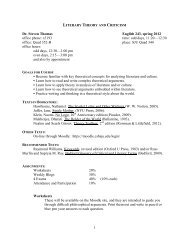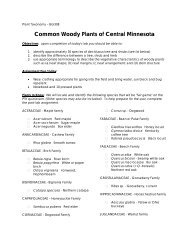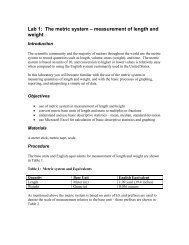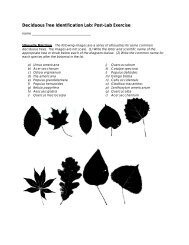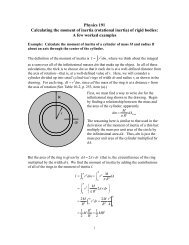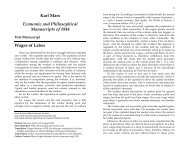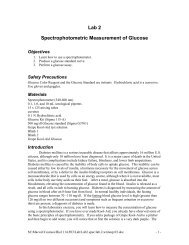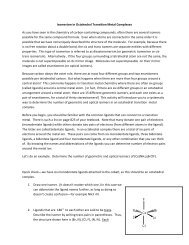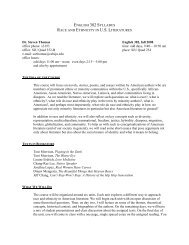A Beethoven Triptych - Employees Csbsju
A Beethoven Triptych - Employees Csbsju
A Beethoven Triptych - Employees Csbsju
You also want an ePaper? Increase the reach of your titles
YUMPU automatically turns print PDFs into web optimized ePapers that Google loves.
any of the texts for the sonatas on this disc, using a name or a text as soggetto cavato was common practice.<br />
This is not a musicological treatise so I will confine myself to this preamble and trust you will give me the<br />
benefit of the doubt. Please suspend judgment until I have put my discoveries in a book dealing with all of this<br />
in greater depth. I hope that my interpretation of these sonatas will speak more eloquently of my discoveries<br />
than a whole library of analytical detective work could.<br />
OPUS 101 (1817)<br />
“Humans must therefore comprehend the so-called idea by going from the perception of the many to the one<br />
as it is apprehended in its totality by thought.” Plato, Phaedrus Dialogue.<br />
It took me a little over a year to grasp – “by going from the many to the one” – that the genetic code of the<br />
work is in its totality contained in the first two measures, and three more years to realize <strong>Beethoven</strong>’s secret<br />
intentions.<br />
Example 1<br />
First movement<br />
measures 1,2<br />
Yes, the soggetto cavato in Opus 101 is that single adored name, Dorothea, used – as only a <strong>Beethoven</strong> could<br />
and did with names of friends – in a thousand ways that totally defy a brief synopsis. After ten years of rechecking<br />
and probing there isn’t a shadow of a doubt in my mind that Baroness von Ertmann is indeed the<br />
Immortal Beloved. The letter containing these two words “Unsterbliche Geliebte” was found in a secret drawer<br />
after <strong>Beethoven</strong>’s death. It was written in early July 1812 when the composer was forty-one, Dorothea von<br />
Ertmann, married at eighteen and <strong>Beethoven</strong>’s student since 1802, then years younger. The piano sonata dedicated<br />
to her, opus 101, was finished four and half years later. Concerning this dedication, <strong>Beethoven</strong> wrote the<br />
publisher that “quite by chance” he happened on the dedication to his lieben werthen Dorothea Caecilia, his<br />
dear and esteemed Dorothea-Caecilia (Saint Caecilia is the Patroness of music and musicians). Dr.<br />
Brandenburg from the <strong>Beethoven</strong> Haus who wrote a commentary for Henle’s splendid facsimile edition of<br />
Opus 101, expresses doubts, on the basis of this “der Zufall macht” that the sonata had been composed specially<br />
for the Baroness.<br />
I am slightly embarrassed to confess my lack of innocence in these matters; <strong>Beethoven</strong> did exactly what I<br />
would have done if I wanted to keep my secret safe (there is no doubt this was the case – let us not forget that,<br />
besides a thousand other considerations, the Baroness was a married woman). Would one have expected<br />
<strong>Beethoven</strong> to say: “For all these years I have not been able to forget you; this sonata is what was often intended<br />
for you” He actually did write the second phrase “was ihnen oefters zugedacht war” (so much for “quite<br />
by chance”) but was prudent enough to leave out the first! I would argue that, on the contrary, a subterfuge<br />
such as this would provide extra external evidence supporting Mr. Marek’s findings, not even mentioning the<br />
convoluted and clumsy way (this was at least in part intended for the Bühne, the outside world) <strong>Beethoven</strong> –<br />
quite apparently ill at ease – continues with the dedication. Yet if one can “read” the text, external evidence<br />
becomes superfluous. The music speaks its secret … eloquently.<br />
My colleague, Philip Welter, transcribed the sonata for three voices and sparse piano accompaniment; I have<br />
often used extracts from this “cantata” arrangement to bolster my argument that the text throughout consists of<br />
but this single name, “Dorothea,” and its permutations. This verbum “Dorothea” doesn’t merely enable one to<br />
follow the pregnant opening motif of this sonata in all its myriad variations and transformations, but it also<br />
reveals the character, the true “meaning” of each and every measure of its four movements. The name


